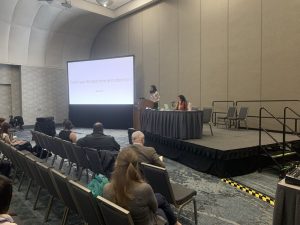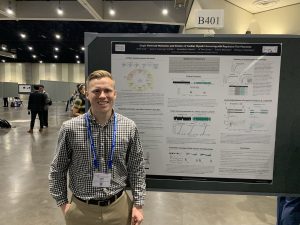Congratulations Dr. Ankit Garg
Dr. Ankit Garg won the Sobel Award for Basic and Translational Research.

New Greenberg lab publication looking at the mechanics and kinetics of cardiac myosin working stroke
This work, lead by first authors Sarah Clippinger-Schulte and Brent Scott, shows that regulatory proteins in cardiac muscle act via a steric blocking mechanism at physiological ATP concentrations. These proteins do not affect myosin’s mechanics or load dependence.
Interestingly, we see that regulatory proteins tune the kinetics of cardiac myosin’s interactions with the thin filament at low, non-physiological ATP concentrations, suggesting biophysical mechanisms that cannot be explained using conventional models.
The behavior of cardiac myosin interacting with regulated thin filaments is different from other regulated actomyosin systems where these proteins can tune myosin’s mechanics and kinetics, highlighting the diverse roles of regulatory proteins in the cell.
The paper can be found here.
New Greenberg lab collaborative publication with the Geeves and Leinwand labs
The paper can be found here.
Greenberg lab and friends present at BPS 2023




Congratulations Brent!
Brent Scott was appointed to the Pediatric Cardiopulmonary T32.
New Greenberg lab publication
In collaboration with the Lin and Stitziel labs, we applied our biophysical tools to study a de novo variant found in a patient with heart failure. We show how these tools can be used to provide insights into the potential pathogenicity of rare variants and harnessed to identify potential precision medicine therapeutics. The paper can be found here.
New Greenberg lab publication
In collaboration with the Leinwand and Bowman labs, we show that the dynamics of myosin play a critical role in determining drug specificity. The paper can be found here. Congratulations to all of the authors.
New Greenberg lab preprint looking at how the cardiac myosin working stroke is modulated by the thin filament
Human heart contraction is powered by the molecular motor β-cardiac myosin, which pulls on thin filaments consisting of actin and the regulatory proteins troponin and tropomyosin. In some muscle and non-muscle systems, these regulatory proteins tune the kinetics, mechanics, and load dependence of the myosin working stroke. Despite having a central role in health and disease, it is not well understood whether the mechanics or kinetics of β-cardiac myosin are affected by regulatory proteins. We show that regulatory proteins do not affect the mechanics or load-dependent kinetics of the working stroke at physiologically relevant ATP concentrations; however, they can affect the kinetics at low ATP concentrations, suggesting a mechanism beyond simple steric blocking. This has important implications for modeling of cardiac physiology and diseases.
Paper can be found here.
New Greenberg Lab publication in collaboration with the Geeves, Bowman, and Leinwand labs
Here, we examined how the sarcomeric myosin MYH7b is structurally, mechanically, and kinetically tuned for its unique role in specialized muscles.
Publication can be found here.